The golden age of beer-making in Edinburgh has certainly passed. At one time in the city’s long and illustrious history there were more than 40 breweries anchored on Edinburgh’s charmed circle of wells pumping out delicious ales for the thirsty masses. One by one the breweries disappeared over the last 150 years until today, when a single brewery carries the torch of Edinburgh’s proud brewing history: Caledonian, or The Caley as it’s known locally.
Why had Caledonian survived while all else perished? Maybe there was some kind of Highlander-esque death match (“there can be only one!”) between the breweries. That would be appropriate. Occam’s razor suggests otherwise, that perhaps that the citizens of Edinburgh just really enjoyed The Caley’s brews. I was about to find out.
I’ve been to almost as many breweries as distilleries, including several microbreweries in Scotland, but none as large as Caledonian (in Scotland that is – I’ve been to Miller Brewing in Milwaukee which is just huge). The Caley stands a nice 30-minute walk west of Elmview B&B and Edinburgh’s city center. My dad and I arrived and met Gabi, our super friendly guide for the private tour.
The Caley is a distinctive red brick building from the Victorian era, and it’s this old lineage that potentially saved it from demolition in the 1980s. Edinburgh “lists” buildings of historical significance, and this listing protects them from changes and destruction. Hop heads should raise a pint in honor of that law because without it The Caley might have been the final nail in the coffin of Edinburgh’s brewing history. The Caley survived, however, and went independent in the early 90s when it started brewing its flagship beer: Deuchars IPA.
Deuchars IPA is the flavor of Edinburgh. You’re bound to see it on tap at any good pub in the city, and I’ve seen it as the only real ale available in tiny pubs across the Scottish mainland. If it’s good enough for Rankin’s Inspector Rebus, it’s good enough for me. Suffice to say, I was well-acquainted with Deuchars IPA before this visit.
These days Heineken owns Caledonian. They jumped in to save the brewery from bankruptcy during the recession in 2008. Gabi conveyed the gratitude they all feel toward Heineken who wisely hasn’t shouldered into their processes. And while brewing and distilling share many of those processes, I saw many things at The Caley I’d never seen before.
The Caley oozes with personality. The red brick exterior, short doorways, red brick and wood interior, and old school equipment transported me back to Victorian Edinburgh. In fact, Gabi told us a story about one tour group who, after seeing much of the interior of the brewery, asked where the beer was actually made. They’d mistaken what they’d seen as some kind of museum. Those folks could be forgiven because the brewery does have the beautiful, attractive patina of age.
Gabi led us through their milling room where a fire once erupted from grain particulates in the air (a danger in distilleries, too), around their giant steel mash tuns, through a dusty attic where hops are stored, and down to a trio of open copper boilers, the likes of which were completely alien – and awesome – to me. They pump the wort from the mash tuns into these boilers, throw in bags of hops, and give heat to the mix for a good hour. Apparently I’ve been to too many distilleries, where they simply pump wort into washbacks and add yeast, because this step felt out of place.
The actual fermentation vessels are large metal bins with open tops that look a bit like livestock feed troughs (especially with the wort in them). They add the yeast at this point and I assume they must get some natural airborne yeasts as well since they can’t seal the vessels. Surprisingly, I didn’t notice any movement or “action” in the wort from the yeast. Distilleries need to run giant fan blades to battle back the foam produced by the violent frothing of the wort by yeast. Different system, different yeast, different results – or perhaps we came at the wrong time in the cycle.
One of the neatest things about The Caley is how they use gravity in place of technology to assist with the brewing process. Being a listed Victorian building, they don’t have many of the technological advancements other major breweries have, nor can they implement them. Instead, the brewery was arranged in a vertical manner such that gravity would transport the liquid from place to place without needing hydraulics or other means.
Our last stop on the tour included a look into their filling area where casks were taking in The Caley’s wares. These are real ales they’re making, so the beer is not carbonated or pressurized. Gabi led us to the bar where we met Tom Cannon, Caldeonian’s head of marketing and sales. Needless to say, my dad had worked up a thirst – well, me too – and Tom was more than happy to pour us an array of The Caley’s brews.
We started with their new 2Point8, which is billed as a full-bodied copper ale. 2Point8 refers to the beer’s alcohol percentage, which, if you’ve ever been to the UK, is quite obviously listed next to every beer in the pub. It seems to be the primary determinant of drink choices. Whether the UK admits it or not, there’s a lot of drinking going on during work-week lunches, and 2Point8 nicely slides into that niche. It’s beer alright, but it won’t make you silly. And to be honest, it tastes pretty damn good.
Deuchars IPA came next and it was the same slightly hoppy IPA I know and love. It’s a great session beer in the cask at less than 4% ABV (in bottles it’s a higher 4.4%). It’s not your typical IPA because there isn’t much bitterness. Instead there’s more hop flavor, and it’s infinitely quenchable.
As we moved into the darker beers, first up was the Caledonian 80/-. The 80/- refers to how much the beer used to cost in shillings. The higher the number, the higher the cost and the higher the alcohol. This one’s very smooth and malty but not heavy like many so-called Scottish Ales. Another easy drinker that my dad particularly liked.
Our final pint was The Flying Scotsman, a reference to an old train that used to run from Edinburgh to London and back. It’s an apt name because the beer is a brown beer aimed at the English market. It seems the English – especially Londoners – drink brown beers to the exclusion of all others. Caledonian is tapping into this huge market with The Flying Scotsman. It’s dark amber in color with some coffee and toasted malt aromas. Another creamy smooth pint with some hops on the finish. I quite liked it, though Deuchars IPA remains my favorite of The Caley’s offerings.
In the course of drinking and banter, Tom provided one of the best tips I’ve ever received. When you receive a pint of beer at a pub, if you see bubbles coming off the side of the glass then you know your glass is dirty. The dirty particles act as anchors for carbonation. Send it back. Tell them the glass is dirty. Don’t drink from unclean vessels.
You have to admire Caledonian. Their old Victorian building and equipment evoke the past. Their tenacity has brought them through to the present. And their product will take them into the future.
Disclosure: Caledonian Brewery provided my dad and me with a complimentary tour and tasting. All thoughts and opinions expressed here are my own.

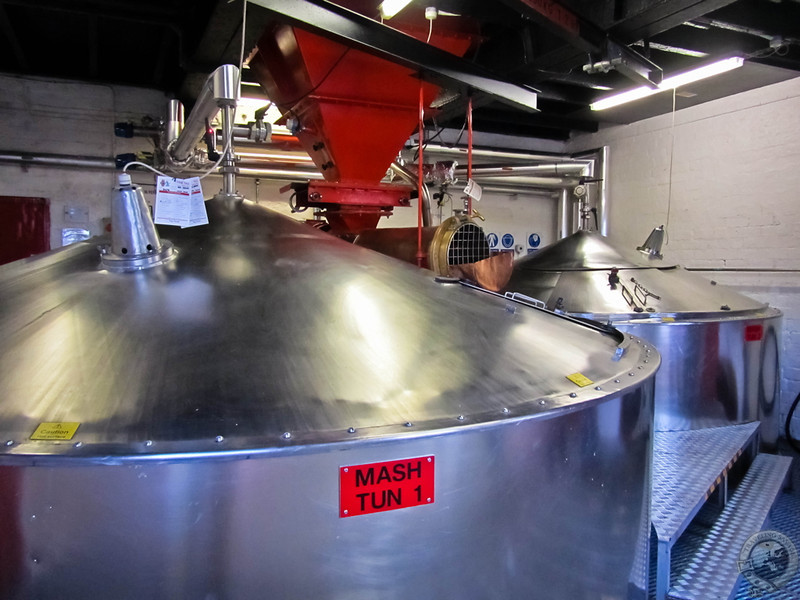
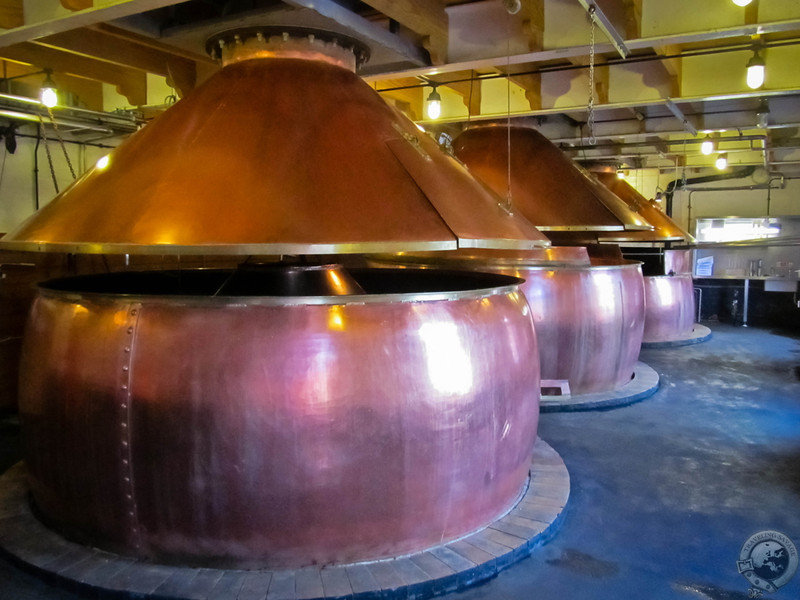
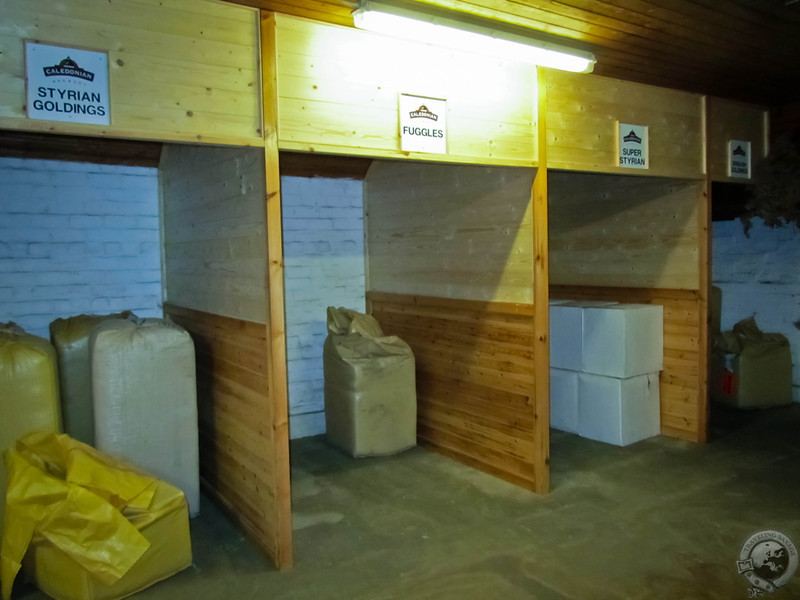
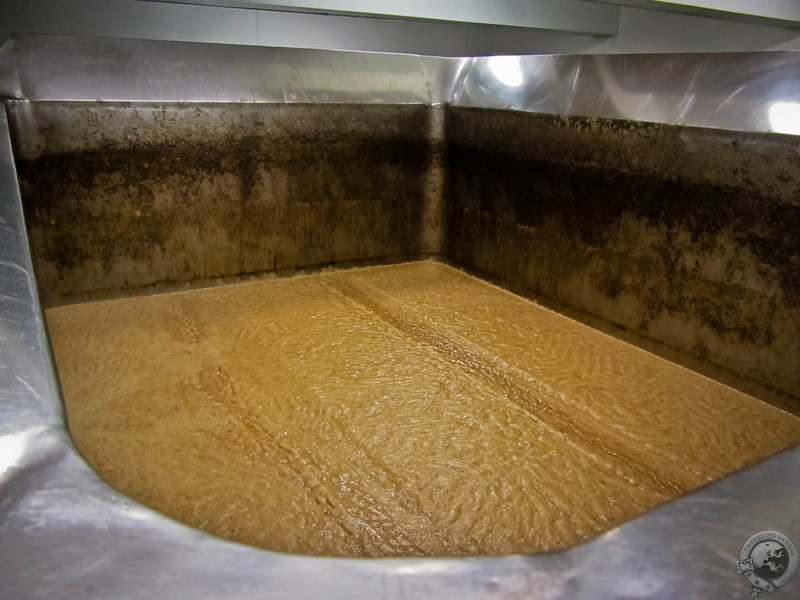
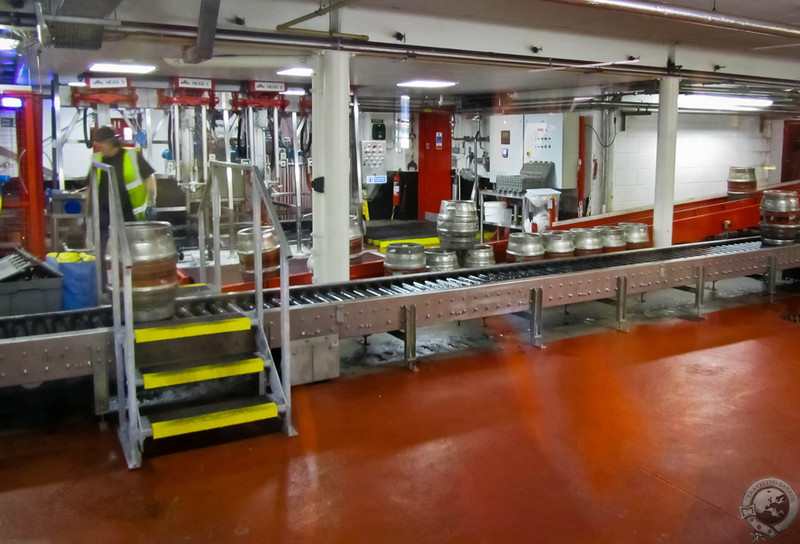
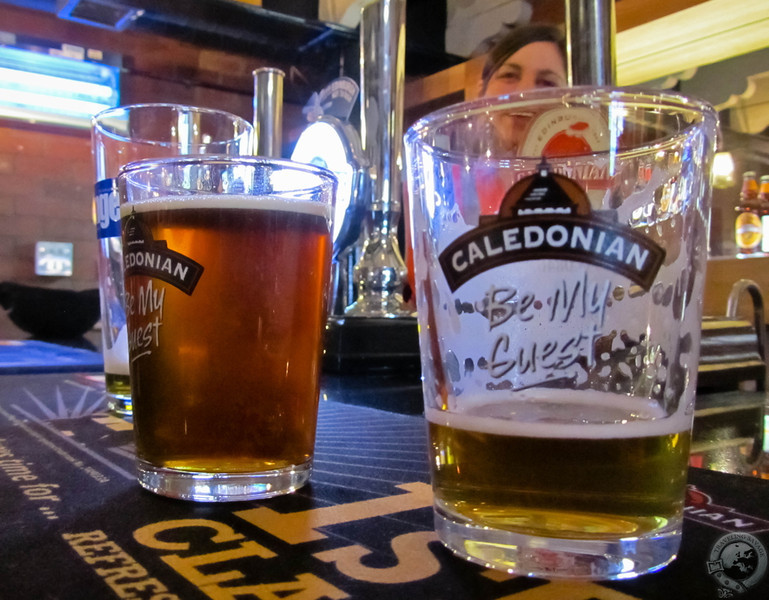
Great stuff Keith
I used to live just around the corner from the Caley; and they did fantastic ceilidh evenings – sadly no more.
Cheers
David
Well they’ve still got The Caley Sample Room down the street. Lots of great beer on tap.
Nice post. It brings back the memories of the visit. Their beers are top shelf, too. I would hope that Heiniken continues to give them freedom to make their beers. It was certainly one of the most interesting brewery tours I’ve been on and the people there were very hospitable.
Wow, too bad I missed out on the Caley while I was there last month. That would have been a great tour. Not sure where Tenants beer fits into Scotland. I wanted a locally brewed beer when we were (I think) in Dundee and our waitress said Tenants was the nearest to a local brew.
I just finished a brew of Irish Stout at my home and it tastes pretty good. Very dark like Guiness, but with a much more natural taste 🙂
Cheers Keith!
Randy Plunkett
Ottawa, Canada
Hello,
I have a question.Is this where the Charmed Circle is brewed?If so, is there a way the beer can be transported to South wales(Neath),as i like the liquid refreshment.I look forward to hearing from you.
A fellow Welshman,
Keith
P.S. Hope you don’t mind.
Hi Keith. It appears Charmed Circle is brewed here. Can it be transported to Wales? I’m afraid I can’t help you there. Best to look for it in your neck of the woods, contact the brewery, or find a friend in Edinburgh!